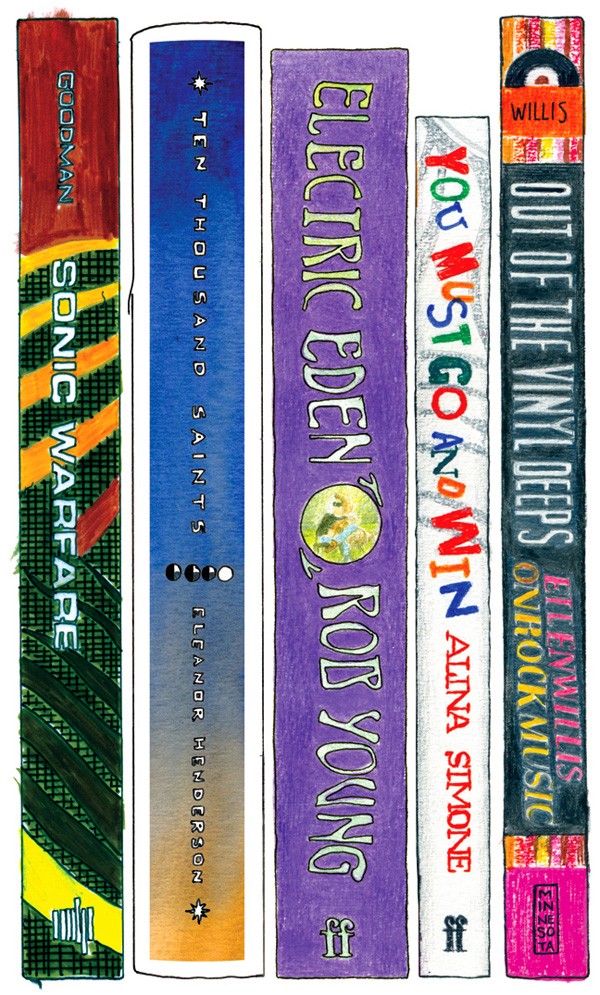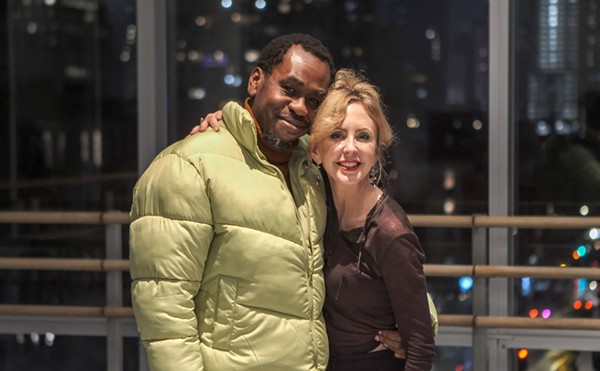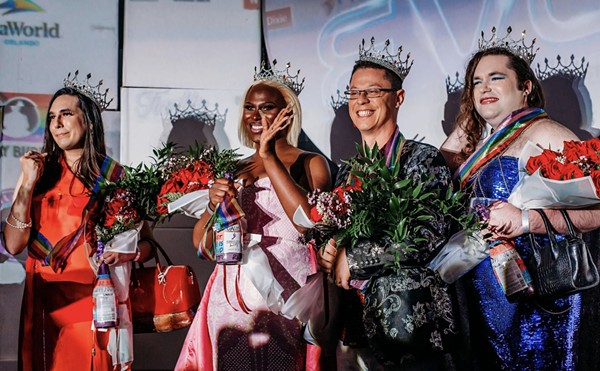Ten Thousand Saints
by Eleanor Henderson n 385 pages n Ecco Books
The power of Ten Thousand Saints may not be in its plot but in its cultural locus: The story of a lost and unloved teenager is a million times told (though Eleanor Henderson's telling is not stale), but the setting, New York's East Village in the late '80s, is sacred ground. The beginning of the AIDS epidemic, the rise of straight-edge hardcore, the struggle of disenfranchised citizens to find a place in an ever-more-expensive city: in other words, battles on the verge of being spectacularly lost. Hence Henderson's valedictory tone as she limns the coming of age of four unparented children and their feckless begetters, the hippie generation unraveling into middle age while Gen-X wound itself tight.
Blurbed by Ann Patchett (Bel Canto) and Dean Wareham (Luna, Galaxie 500), Ten Thousand Saints arrives with the most rarefied of bona fides – anointed by both fiction and music royalty. Yet for all its satisfying heft, its deft characterizations, there's a whiff of the book club about it. A grab bag of capital-I Issues is shoehorned in, as though Henderson had researched rather than experienced, say, tattoos or squats or bong-packing. That faint whiff of inauthenticity is more than offset, though, by piercing sensory descriptions of the experiences we all have: cold weather, adolescent makeout sessions, walking through a new neighborhood, betrayal by (or of) someone you love. The book's brief coda, set almost 20 years later, sets the faded seal of mere nostalgia on what was world-shaking at the time. – Jessica Bryce Young
You Must Go and Win
by Alina Simone n 256 pages n Farrar, Strauss and Giroux
Black Soviet humor pervades this collection of essays by struggling musician Alina Simone. Born in Ukraine and raised in suburban Massachusetts, Simone realized early on that she and her parents, political refugees, didn't see things the same way. Difficulty in gym class, her tragic lack of a pony … to her father, a university professor sentenced to perform hard labor, or her grandmother, who survived the siege of Leningrad, it was as if she were "pointing out mushrooms from an airplane." But their loving support seems only to make Simone feel worse, instilling an inferiority complex bigger than Siberia that dogs her throughout the book.
Wry observations on Brooklyn sublets, the KGB and Britney Spears ramble past in a David Sedaris-meets-Gary Shteyngart morass of wise-ass, looping back and forth in time in a manner that recalls Simone's geographical traverses throughout years of touring in support of her micro-indie releases. The essays are short on establishing detail (for instance, her husband pops up only in rare and brief appearances) – this is decidedly not a memoir. In a chapter about her childhood friend Amanda Palmer (Dresden Dolls), Simone seems to come face-to-face with the fact that she might not want to be a musician enough to succeed, while in "The Benefits of Self-Castration," she confronts total commitment. Each story is as quirky and personal as her songs, but like them, a bit samey. It's in the interactions with her parents that her writing gains traction; committing to an actual memoir might be less amusing but more honest. – JBY
Electric Eden: Unearthing Britain's Visionary Music
by Rob Young n 664 pages n Faber and Faber
Scratch the surface of all that faeries-and-druids stuff that tinges '70s folk-rock, and you'll find some deeply twisted, Wicker Man-type weirdness. (Patricide and incest, midnight orgies in the fields, smashed limbs around the Maypole … without TV, people got up to some creepy pastimes.) Rob Young, editor of British experimental-music mag The Wire, set out "to write a history of British folk-rock's high-water mark" (Vashti Bunyan, Nick Drake, Pentangle, Incredible String Band et al.) but got sucked down past that High Hippie Royalty into a pool of Elizabethan ballads, Blakean mysticism, Morris dancing and the mud of the Somme. The book breaks free of pastoralia, though, never forgetting to interact with the modern world, no matter how much some of its subjects might have: Young starts in the mists of antiquity and lingers in the folk-saturated 1970s, but he traces a lineage from the druids to Gustav Holst to Philip Heseltine to the Fairport Convention to Marc Bolan to Talk Talk to Julian Cope.
In the first chapter a young Vashti Bunyan decides to drop out of civilized society, and Young's description of the damp English summer, the wisps of mist wreathing thorny hedgerows bathed in golden light, captures the diamond-days tenor of the time without resorting to politics or polemics. The tidal pull of British nostalgia for Avalon/Arden/Albion manifests here as a background susurrus, whispering through Young's painstaking research; Electric Eden is not bogged down by the facts but rather nicely grounded. The poetics are apparent from the first line of the foreword: "As I rode out on a hot, bright, early-May day of birdsong and blossom, cycling over London's Blackfriars Bridge in the early evening, with the dazzling sky vaulting above the silver chain of the Thames …" but Young's first-person approach knits the lyrical to the academic in a deeply enjoyable read. It may be a challenge to keep reading rather than continually putting down the book to search iTunes for songs mentioned in the text, but the book's meandering discursiveness encourages an on-and-off commitment to its pages. – JBY
Sonic Warfare: Sound, Affect, and the Ecology of Fear
by Steve Goodman n 270 pages n MIT Press
Author Steve Goodman could be the Lon Chaney of underground electronic music. He's Kode9, an artist on his own Hyperdub label; he's also a media lecturer in the School of Social Sciences at University of East London. The phlegmatic head-nodding of trending dubstep might mislead a casual fan regarding Goodman's scholarly writing, though. Sonic Warfare details historic episodes of sound used as weaponry (with names that suggest club nights: Ghost Army, Curdler, Urban Funk Campaign). The application of (lowercase) dread driven by hyper, audible and infrasonic sound – including aggressors ranging from various militaries to mall managers driving away loitering teenagers with electronic rat-repellants – is a little-known cyberhorror of organ-rattling sonic booms and bioidentical micro-recordings of deadly viruses. After sifting through myriad extant forms of aural attack, Goodman trades hats at the book's end, echoing Philip K. Dick with hypotheses of future auditory transgressions. – Matt Gorney



















